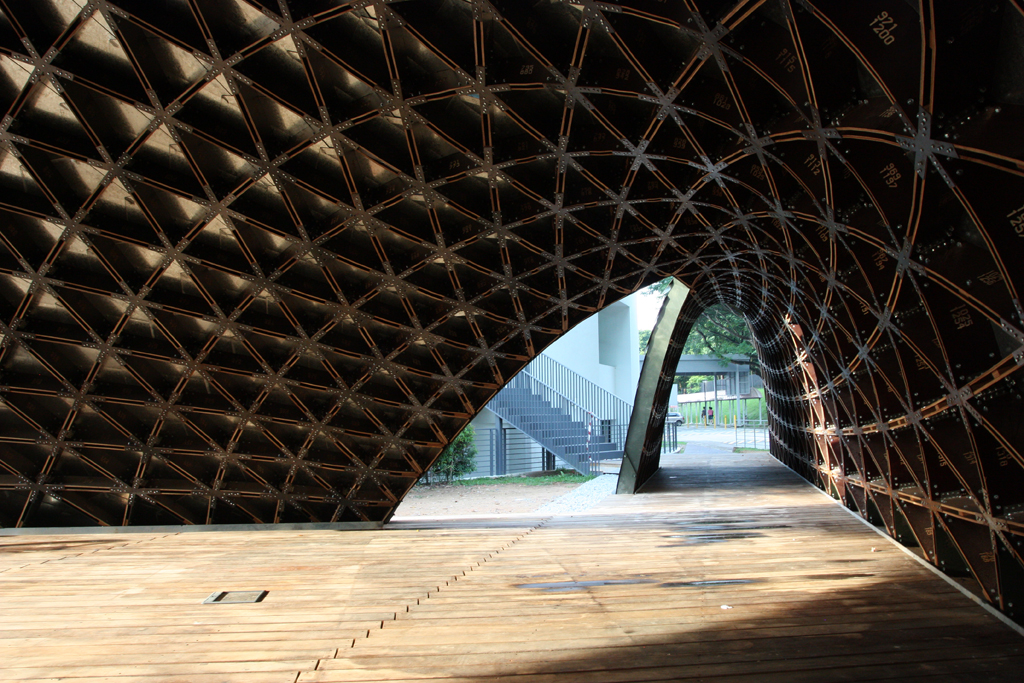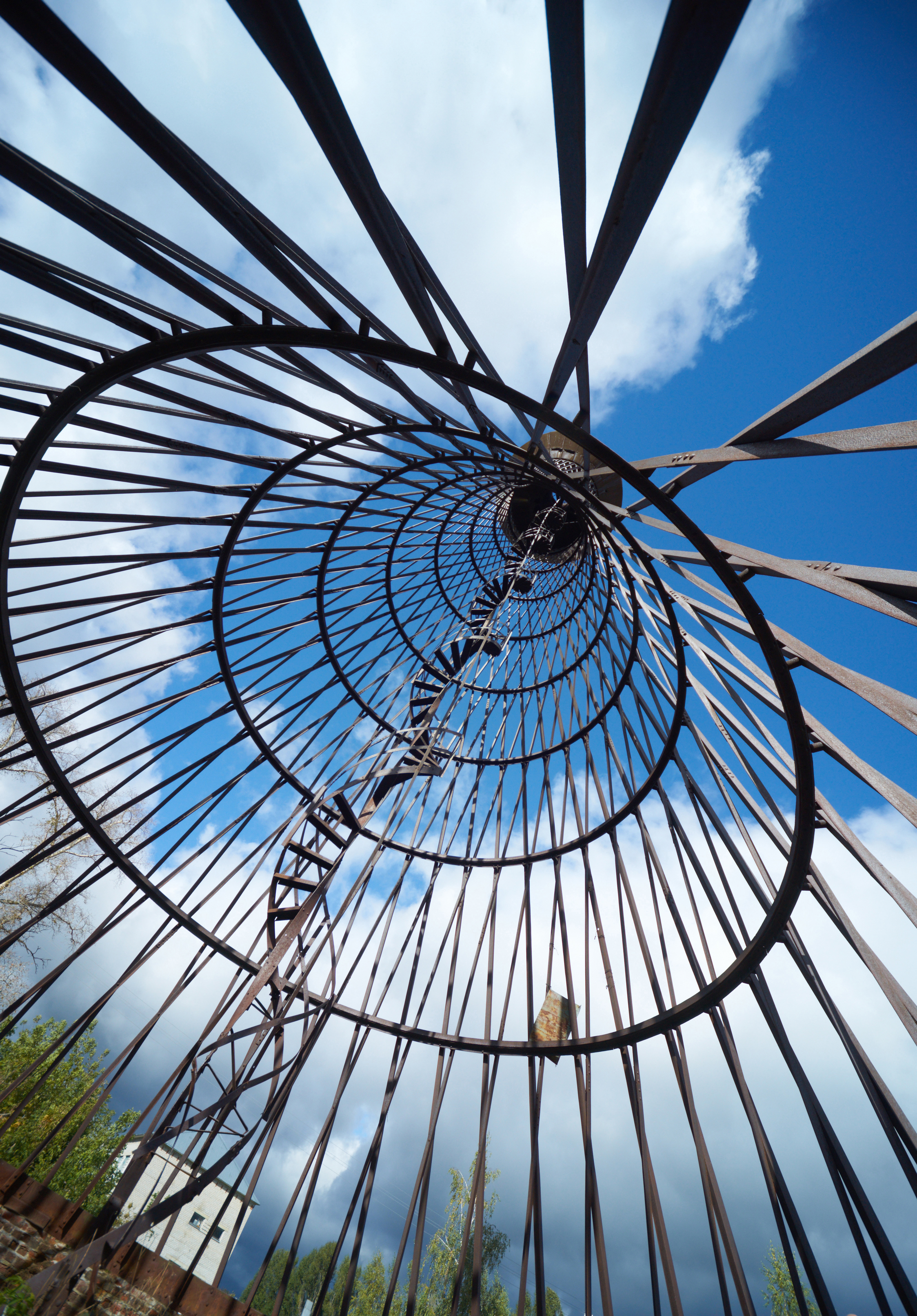|
Vladimir Shukhov
Vladimir Grigoryevich Shukhov (; – 2 February 1939) was a Russian and Soviet engineer-polymath, scientist and architect renowned for his pioneering works on new methods of analysis for structural engineering that led to breakthroughs in industrial design of the world's first hyperboloid structures, diagrid Thin-shell structure, shell structures, tensile structures, gridshell structures, oil reservoirs, Pipeline transport, pipelines, boilers, ships and barges. He is also the inventor of the Shukhov cracking process, first cracking method. Besides the innovations he brought to the oil industry and the construction of numerous bridges and buildings, Shukhov was the inventor of a new family of doubly curved structural forms. These forms, based on non-Euclidean hyperbolic geometry, are known today as hyperboloids of revolution. Shukhov developed not only many varieties of light-weight hyperboloid towers and roof systems, but also the mathematics for their analysis. Shukhov is part ... [...More Info...] [...Related Items...] OR: [Wikipedia] [Google] [Baidu] |
Shukhov (surname)
Shukhov refers to: * Boris Shukhov (*8 May 1947), a retired Soviet cyclist * Vladimir Shukhov (1853–1939), a Russian engineer-polymath, scientist and architect. Various structures in Russia and an industrial process bear his name: Structures: * Shukhov Tower, Shukhov Tower, Moscow * Shukhov Rotunda * Shukhov tower on the Oka River, Shukhov tower on the Oka River, Nizhny Novgorod Industrial process: * Shukhov cracking process {{disambiguation ... [...More Info...] [...Related Items...] OR: [Wikipedia] [Google] [Baidu] |
Novo-Ryazanskaya Street Garage
Novoryazanskaya Street Garage, also spelled Novo-Ryazanskaya Street Garage, and known as "Horseshoe garage", was designed by Konstantin Melnikov and Vladimir Shukhov (structural engineering) in 1926 and completed in 1929 at 27, Novoryazanskaya Street in Krasnoselsky District, Moscow, Russia, near Kazansky Rail Terminal. This garage is still used as such, and houses Moscow's Fourth Bus Park until 2015. Since September 2022, the garage buildings have been undergoing rebuild to accommodate the Moscow Transport Museum. The architect of the renovation project for the museum is Yuri Grigoryan. Photos Image:Konstantin Melnikov, horseshoe garage, 27 Novoryazanskaya Street, Moscow.jpg, Image:Horseshoe Garage by Melnikov and Shukhov RAF2824.jpg, Image:Horseshoe Garage by Melnikov and Shukhov RAF2785.jpg, Image:Steel-roof-of-Novoryzansky-Garage.jpg, See also * Bakhmetevsky Bus Garage * Konstantin Melnikov * Vladimir Shukhov Vladimir Grigoryevich Shukhov (; – 2 Febru ... [...More Info...] [...Related Items...] OR: [Wikipedia] [Google] [Baidu] |
Boiler
A boiler is a closed vessel in which fluid (generally water) is heated. The fluid does not necessarily boil. The heated or vaporized fluid exits the boiler for use in various processes or heating applications, including water heating, central heating, boiler-based power generation, cooking, and sanitation. Heat sources In a fossil fuel power plant using a steam cycle for power generation, the primary heat source will be combustion of coal, oil, or natural gas. In some cases byproduct fuel such as the carbon monoxide rich offgasses of a coke battery can be burned to heat a boiler; biofuels such as bagasse, where economically available, can also be used. In a nuclear power plant, boilers called steam generators are heated by the heat produced by nuclear fission. Where a large volume of hot gas is available from some process, a heat recovery steam generator or recovery boiler can use the heat to produce steam, with little or no extra fuel consumed; such a configuration is ... [...More Info...] [...Related Items...] OR: [Wikipedia] [Google] [Baidu] |
Pipeline Transport
A pipeline is a system of Pipe (fluid conveyance), pipes for long-distance transportation of a liquid or gas, typically to a market area for consumption. The latest data from 2014 gives a total of slightly less than of pipeline in 120 countries around the world. The United States had 65%, Russia had 8%, and Canada had 3%, thus 76% of all pipeline were in these three countries. The main attribute to pollution from pipelines is caused by corrosion and leakage. ''Pipeline and Gas Journal''s worldwide survey figures indicate that of pipelines are planned and under construction. Of these, represent projects in the planning and design phase; reflect pipelines in various stages of construction. Liquids and gases are transported in pipelines, and any chemically stable substance can be sent through a pipeline. Pipelines exist for the transport of crude and refined petroleum, fuels—such as oil, natural gas and biofuels—and other fluids including sewage, slurry, water, beer, hot wa ... [...More Info...] [...Related Items...] OR: [Wikipedia] [Google] [Baidu] |
Oil Reservoir
A petroleum reservoir or oil and gas reservoir is a subsurface accumulation of hydrocarbons contained in Porosity, porous or fractured rock formations. Such reservoirs form when kerogen (ancient plant matter) is created in surrounding rock by the presence of high heat and pressure in the Earth's crust. Reservoirs are broadly classified as ''conventional'' and ''unconventional (oil and gas) reservoir, unconventional'' reservoirs. In conventional reservoirs, the naturally occurring hydrocarbons, such as crude oil (petroleum) or natural gas, are trapped by overlying rock formations with lower permeability (Earth sciences), permeability, while in unconventional reservoirs the rocks have high porosity and low permeability, which keeps the hydrocarbons trapped in place, therefore not requiring a caprock, cap rock. Reservoirs are found using hydrocarbon exploration methods. Oil field An oil field is an area of accumulated liquid petroleum underground in multiple (potentially lin ... [...More Info...] [...Related Items...] OR: [Wikipedia] [Google] [Baidu] |
Gridshell
A gridshell is a structure which derives its strength from its double curvature (in a similar way that a fabric structure derives strength from double curvature), but is constructed of a grid or lattice. The grid can be made of any material, but is most often wood (similar to garden trellis) or steel. Gridshells were pioneered in the 1896 by Russian engineer Vladimir Shukhov in constructions of exhibition pavilions of the All-Russia industrial and art exhibition 1896 in Nizhny Novgorod. Large span timber gridshells are commonly constructed by initially laying out the main lath members flat in a regular square or rectangular lattice, and subsequently deforming this into the desired doubly curved form. This can be achieved by pushing the members up from the ground, as in the Mannheim Multihalle. More recent projects such as the Savill Garden gridshell were constructed by laying the laths on top of a sizeable temporary scaffolding structure which is removed in phases to let ... [...More Info...] [...Related Items...] OR: [Wikipedia] [Google] [Baidu] |
Tensile Structure
Tension is the pulling or stretching force transmitted axially along an object such as a string, rope, chain, rod, truss member, or other object, so as to stretch or pull apart the object. In terms of force, it is the opposite of ''compression''. Tension might also be described as the action-reaction pair of forces acting at each end of an object. At the atomic level, when atoms or molecules are pulled apart from each other and gain potential energy with a restoring force still existing, the restoring force might create what is also called tension. Each end of a string or rod under such tension could pull on the object it is attached to, in order to restore the string/rod to its relaxed length. Tension (as a transmitted force, as an action-reaction pair of forces, or as a restoring force) is measured in newtons in the International System of Units (or pounds-force in Imperial units). The ends of a string or other object transmitting tension will exert forces on the objects ... [...More Info...] [...Related Items...] OR: [Wikipedia] [Google] [Baidu] |
Diagrid
A diagrid (a portmanteau of diagonal grid) is a framework of diagonally intersecting metal, concrete, or wooden beams that is used in the construction of buildings and roofs. It requires less structural steel than a conventional steel frame. Hearst Tower in New York City, designed by Norman Foster, uses 21 percent less steel than a standard design. The diagrid obviates the need for columns and can be used to make large column-free expanses of roofing. Another iconic building designed by Foster, 30 St Mary Axe, in London, UK, known as "The Gherkin", also uses the diagrid system. British architect Ian Ritchie wrote in 2012: Buildings utilizing diagrid * Shukhov Tower in Polibino, Polibino, Russia (1896) * Shukhov Rotunda at the All-Russia exhibition, Nizhny Novgorod, Russia (1896) * Shukhov Tower, Moscow, Russia * Hearst Tower, New York, USA * 30 St Mary Axe, London, England * 1 The Avenue, Manchester, England * CCTV Headquarters, Beijing, China * The Bow, Calgar ... [...More Info...] [...Related Items...] OR: [Wikipedia] [Google] [Baidu] |
Hyperboloid Structure
Hyperboloid structures are architectural structures designed using a hyperboloid in one sheet. Often these are tall structures, such as towers, where the hyperboloid geometry's structural strength is used to support an object high above the ground. Hyperboloid geometry is often used for decorative effect as well as structural economy. The first hyperboloid structures were built by Russian engineer Vladimir Shukhov (1853–1939), including the Shukhov Tower in Polibino, Dankovsky District, Lipetsk Oblast, Russia. Properties Hyperbolic structures have a negative Gaussian curvature, meaning they curve inward rather than curving outward or being straight. As doubly ruled surfaces, they can be made with a lattice of straight beams, hence are easier to build than curved surfaces that do not have a ruling and must instead be built with curved beams. Hyperboloid structures are superior in stability against outside forces compared with "straight" buildings, but have shapes often cre ... [...More Info...] [...Related Items...] OR: [Wikipedia] [Google] [Baidu] |
Industrial Design
Industrial design is a process of design applied to physical Product (business), products that are to be manufactured by mass production. It is the creative act of determining and defining a product's form and features, which takes place in advance of the manufacture or production of the product. Industrial manufacture consists of predetermined, standardized and repeated, often automated, acts of replication, while craft-based design is a process or approach in which the form of the product is determined personally by the product's creator largely concurrent with the act of its production. All manufactured products are the result of a design process, but the nature of this process can vary. It can be conducted by an individual or a team, and such a team could include people with varied expertise (e.g. designers, engineers, business experts, etc.). It can emphasize intuitive creativity or calculated Evidence-based design, scientific decision-making, and often emphasizes a mix of b ... [...More Info...] [...Related Items...] OR: [Wikipedia] [Google] [Baidu] |
Structural Engineering
Structural engineering is a sub-discipline of civil engineering in which structural engineers are trained to design the 'bones and joints' that create the form and shape of human-made Structure#Load-bearing, structures. Structural engineers also must understand and calculate the structural stability, stability, strength, structural rigidity, rigidity and earthquake-susceptibility of built structures for buildings and nonbuilding structures. The structural designs are integrated with those of other designers such as architects and Building services engineering, building services engineer and often supervise the construction of projects by contractors on site. They can also be involved in the design of machinery, medical equipment, and vehicles where structural integrity affects functioning and safety. See glossary of structural engineering. Structural engineering theory is based upon applied physics, physical laws and empirical knowledge of the structural performance of different ... [...More Info...] [...Related Items...] OR: [Wikipedia] [Google] [Baidu] |







